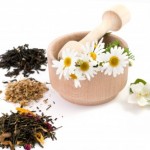 When you talk about Chinese medicine, most people think about acupuncture.
When you talk about Chinese medicine, most people think about acupuncture.
What they may not know is that Chinese medicine involves many forms of healing, of which acupuncture is perhaps the best-known.
However, acupuncture is only one way in which Chinese medical practitioners help people to heal.
The following are descriptions of some of the modalities, including acupuncture, that are considered important components of Chinese medicine.
Acupuncture
Acupuncture is a practice in which disease and pain can be treated and prevented through the insertion of fine, sterile needles into various points on your body. Acupuncture is based on the theory that energy circulates in numerous pathways in your body, and pain and disease are the result of a blockage or imbalance in this energy.
Acupuncture points are usually located in small depressions in your skin, and are where the pathways come closest to the surface.
By stimulating these points using an acupuncture needle this energy can be accessed and balanced to return your body to its natural vitality.
Acupuncture is very safe when performed by a licensed practitioner.
A treatment consists of a selection of points, based on your specific diagnosis.
Some people a hesitant to try acupuncture because they believe it will be painful. However, the needles are very fine and when inserted produce some sensation, but generally not pain.
Most people find acupuncture to be very relaxing and revitalizing.
Auricular Acupuncture
Auricular Acupuncture the practice of preventing and treating disease and pain by stimulating certain points in your ear.
It works a bit like foot reflexology, in which internal organs can be treated by stimulating points in your foot. Similarly when disease or imbalance occurs in a part of your body, it can be treated by stimulating points in your ear.
Often skin reactions will appear in your ear at points that correspond to organs that need to heal.
For example, if you are struggling with pneumonia or bronchitis, you may also have tenderness, discoloration, or skin changes at the point in your ear that corresponds to your lungs.
The needles used for auricular acupuncture are generally smaller and finer than body acupuncture needles.
Auricular acupuncture may be performed in conjunction with full body acupuncture or by itself. Auricular acupuncture is commonly used in the treatment of addictions, such as smoking, chemical use, and weight loss, as well as in the treatment for Post Traumatic Stress Disorder.
Chinese Herbal Medicine
Practitioners of Chinese herbal medicine rely on formulas or a combination of herbs to achieve the desired healing effects. Herbs come in many forms, including pills and capsules, powdered or raw, which are cooked in hot water and taken like a tea.
Chinese herbal medicine is an important treatment modality for many practitioners.
It began thousands of years ago in southern China, where the weather was warm and humid, producing a rich variety of plants from which to choose. Herbalists today draw on formulas that have been in use for hundreds, and even thousands of years.
Chinese herbs are effective for a number of reasons.
Practitioners are better able to fine-tune their treatments and a formula can be custom tailored or altered as an illness or condition changes. In addition, by taking herbs, you can augment your acupuncture treatment, and continue your care at home.
Bodywork or Tui Na
Bodywork is the use of massage or Tui Na, which is a form of Chinese massage, to treat a variety of conditions.
Tui Na usually incorporates the stimulation of acupuncture points and energy pathways in a massage format to achieve the best results.
Tui Na may be used for any condition, but is especially effective for musculoskeletal conditions. A practitioner may work on the entire body or just the affected area.
Cupping
Cupping is a method of treatment that uses suction to move energy and blood.
Glass cups are applied, usually after a lit alcohol swab inside the cup has created the vacuum necessary to create suction on your skin. The cups may be left in one position on your body or slid across your skin to affect a larger area.
Cupping is especially effective for painful conditions.
Most frequently, your back area or larger muscles on your legs or arms are cupped.
While not painful, the cups frequently leave a dark red or purple circle on the area that was cupped. These marks disappear in about a week.
Moxabustion
Moxabustion is a healing method that involves the use of the herb artemesia to stimulate acupuncture points and promote healing.
The artemesia may be loosely rolled into cones or tightly rolled into a stick, and is lit and placed near your body, usually over specific acupuncture points.
The smoke produced is extremely warming and penetrating.
Moxabustion originated in the northern part of China, which has a cold and dry climate. It is commonly used to treat cold conditions such as arthritis that becomes worse during cold, damp weather.
Lifestyle and Dietary Therapy
Practitioners of Chinese medicine believe that lifestyle and diet play a large role in health and illness.
As a result, most practitioners offer lifestyle guidelines on topics such as stress reduction, exercise, and sleep as part of their treatment plans.
Practitioners of Chinese medicine believe that food is medicine that you eat three times a day. Therefore, most practitioners will offer advice and guidelines about dietary choices.
Dietary therapy may consist of ways to improve your digestion and choosing easily digestible and nourishing foods, or they may prescribe foods for their specific actions, such as nourishing a particular organ or system in the body.
Are you interested to know how Chinese medicine can apply to you?
Please follow the link to my website below, or leave a comment here on the page. You can also follow Alternative Medicine on Facebook and asks your questions there as well.